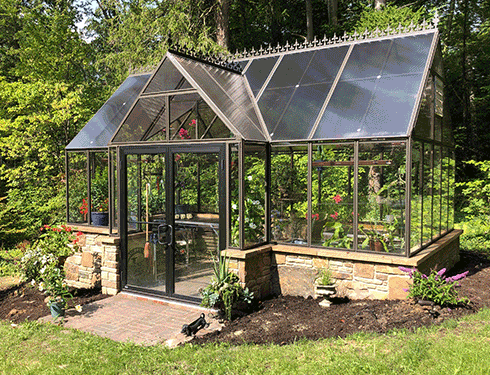The Future of Greenhouses: Developments in Lasting Agriculture
Are you interested concerning the future of greenhouses and exactly how they are reinventing sustainable agriculture? Look no more! In this write-up, we will check out the amazing developments that are leading the way for a greener and much more reliable farming industry. From sophisticated environment control systems to vertical farming strategies, water-efficient irrigation methods, renewable resource integration, and wise information analytics, these advancements are transforming the way we grow our food. Prepare to discover the future of sustainable agriculture in greenhouses!
Advanced Climate Control Systems
To achieve optimal growing conditions, you can count on the developments in greenhouses with sophisticated climate control systems. These systems have transformed the method we cultivate crops, providing a controlled atmosphere that is helpful to plant development. With these ingenious systems, you can now control temperature, humidity, light degrees, and also CO2 concentrations to produce the perfect problems for your plants to grow.
Among the essential features of these advanced environment control systems is their capacity to regulate temperature. By utilizing sensing units and automated controls, the greenhouse can change the temperature based upon the specific requirements of the plants. This guarantees that they are never subjected to extreme warmth or cool, which can be damaging to their growth.
Moisture control is an additional vital facet of these systems. By keeping the perfect humidity levels, you can prevent concerns such as mold, mold, and disease from impacting your crops. These systems can likewise manage the amount of light that reaches the plants, ensuring that they get the ideal quantity for photosynthesis.
Moreover, progressed environment control systems can even control carbon dioxide focus. By enhancing the levels of carbon dioxide in the greenhouse, you can improve plant growth and efficiency. This is especially useful in areas with low all-natural CO2 levels.
Upright Farming Strategies
One essential upright farming strategy is making use of piled expanding systems. Stacked growing systems are typically utilized in urban areas where room is limited.
One prominent approach is referred to as upright hydroponics, where plants are expanded in nutrient-rich water without soil. This technique is extremely reliable as it reduces water usage by up to 90% compared to conventional farming techniques. Furthermore, considering that the plants are expanded indoors, they are safeguarded from illness and insects, lowering the demand for chemicals.
An additional method is aeroponics, which includes suspending the plant roots in a haze or air atmosphere. This technique permits for optimal nutrient absorption and oxygenation, leading to faster growth and higher yields. Aeroponics additionally makes use of much less water than typical farming and can be carried out in upright systems, making it a prominent option for vertical farming.
Water-efficient Irrigation Methods
When it comes to carrying out water-efficient irrigation methods in lasting agriculture,Taking full advantage of water conservation is important. With global water deficiency ending up being a pushing concern, it is critical to establish innovative strategies that enhance water usage in greenhouse procedures.
One appealing method is drip additional resources watering, which delivers water directly to the plant roots, lessening waste and evaporation. By making use of a network of tubes with little emitters, water is applied gradually and specifically, guaranteeing that plants obtain the needed moisture without excess drainage.
One more reliable method is making use of dirt wetness sensing units. These devices determine the dampness material in the dirt and offer real-time information to farmers. By keeping track of the dirt's dampness levels, farmers can properly determine when and just how much water to use, stopping over-irrigation.
Additionally, the implementation of rainwater harvesting systems is obtaining appeal in greenhouse agriculture. Accumulating rainwater from roofs and saving it in storage tanks allows farmers to use this natural resource for irrigation objectives, decreasing dependence on standard water sources.
Lastly, the fostering of automated watering systems can considerably boost water effectiveness. These see this site systems use sensors to detect dirt moisture degrees and weather conditions, readjusting irrigation timetables accordingly. By maximizing water usage based on real plant needs, these systems can minimize water waste and advertise sustainable farming practices.
Renewable Resource Integration
Eco-friendly power assimilation in greenhouses uses a number of benefits, including reduced operating prices and reduced reliance on non-renewable power sources. The created power can then be made use of to run different operations within the greenhouse, such as lights, air flow, and heating systems. These generators harness wind power and transform it into power, which can be utilized to supplement the energy requirements of the greenhouse.
Smart Data Analytics and Automation
To improve the efficiency of your greenhouse operations and maximize source utilization, think about applying wise information analytics and automation. Smart information analytics involves collecting and examining information from various sensing units and tools within your greenhouse.
Automation, on the other hand, involves making use of technology to automate jobs that were previously done manually. This can include automating the control of illumination, air flow, watering systems, and nutrient distribution. By automating these procedures, you can ensure that your plants receive the right conditions and nutrients at the best time, without the requirement for consistent hand-operated treatment. This not just saves you effort and time but also lowers the threat of human mistake.
In addition, clever information analytics and automation can collaborate synergistically. The information gathered by sensors can be used to inform automated systems, allowing them to make real-time changes based upon the present conditions. This combination of data analytics and automation can lead to more specific and reliable resource allocation, inevitably causing higher yields and better plant high quality.
Conclusion
In final thought, the future of greenhouses in sustainable agriculture looks encouraging. With advanced environment control systems, upright farming strategies, water-efficient irrigation techniques, and eco-friendly power integration, greenhouses are becoming a lot more reliable and ecologically friendly.

By optimizing water usage based on actual plant requirements, these systems can minimize water waste and promote lasting farming practices.
:max_bytes(150000):strip_icc()/GettyImages-1221376177-a86b340094864992a4ecbcb459093d7b.jpg)